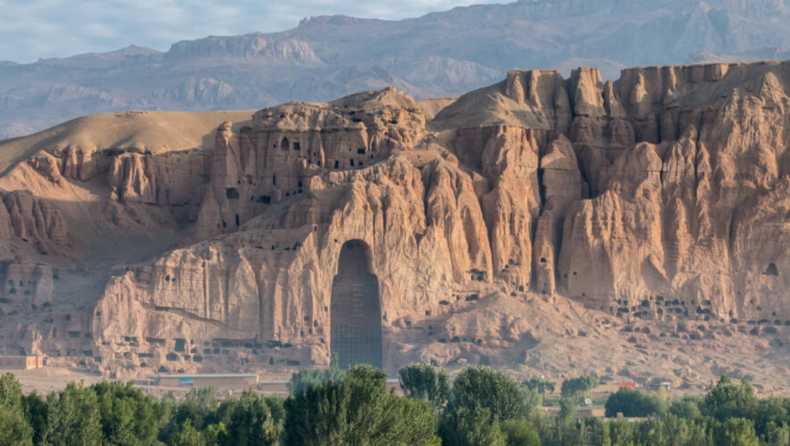The Afghani government is now looking forward to rebuilding the historic bazaar, which was destroyed in 1990. But the experts do not seem to be pleased with the news.

The rebuilding of the Bazaar:
It has been more than two decades since the Bamiyan Buddha statues in Afghanistan were destroyed. The Taliban is now starting construction work near the cliff, where the giant statues once stood. It was in 1990, with the civil war at its peak in the background, when the historic bazaar was destroyed.
This is being done to develop a tourism complex. The tourist complex is reported to have restaurants, public toilets, guest houses, and parking, along with handicraft and grocery shops.
As the Taliban is trying attempts at embracing modernity by developing a new complex, some experts are believing that the ruined bazaar is itself a historic site. There might be other ancient relics buried underneath the bazaar. Thus, the Taliban’s new infrastructural construction may be doing more harm to the site.
UNESCO’s response:
Reportedly, the United Nations Educational, Scientific and Cultural Organization (UNESCO) which has been involved in extensive work at the Bamiyan site for decades, has not been consulted for the rebuilding project. The UN agency said in a statement:
“UNESCO has neither requested nor been associated with this project, which is located in the heart of the archaeological zone and could be problematic for the proper conservation of the world heritage site.”
The Bamiyan Buddhas:
The Bamiyan Buddhas were carved out of a stony cliffside in the Bamyan Valley. It is located in central Afghanistan. The sixth century AD statues stood 180 feet tall for 14 centuries. In 2001, with the help of heavy explosives, the Taliban had blown them up, just before the US invasion.
The Eastern Buddha, which is the smaller one of 125 feet was built around 570 AD. The Western Buddha, which is the larger one of 180 feet was built around 618 AD. Experts have concluded these dates based on the carbon dating of the Buddha’s structural components.

The location was a Buddhist pilgrimage center on the Silk Road. The Silk Road was an ancient trade route between Europe and China.
International pressures were faced by the Taliban to preserve the sculptures when they revealed their plans of demolishing them in 2001. However, they moved ahead with their plans and used large heavy explosives to demolish the monuments, citing the reason for them being un-Islamic.
Despite savage crackdowns in a few regions, the Taliban is attempting to show a more moderate face to the world after their retaking of the nation’s control.
International groups are putting pressure on the group for conserving Afghanistan’s cultural legacy while navigating the economic and security hurdles in managing the country after years of conflicts.
Last year, when the Taliban came into power in Afghanistan, it was charging $5 for tourists. These tourists were trying to reach the place where the statues stood initially. Now there are only holes to look at.
With the Taliban’s fresh takeover of Afghanistan, they are welcoming fearless travelers to the ancient Bamiyan Buddha statues.
NBC’s report:
According to an article published in NBC, the travelers may pay $5 to the Taliban guards at the ticket counter. This charge was just to stare at the empty holes where the Buddha statues stood earlier.
According to NBC, one Afghan visitor came to celebrate their demolition and to grieve the monuments’ loss.
“I was young when these were destroyed, about 7 years old, and since then it has been a dream to come and see what happened here. I’m happy it was destroyed. I’m here to see the ruins actually,” he said to NBC.













